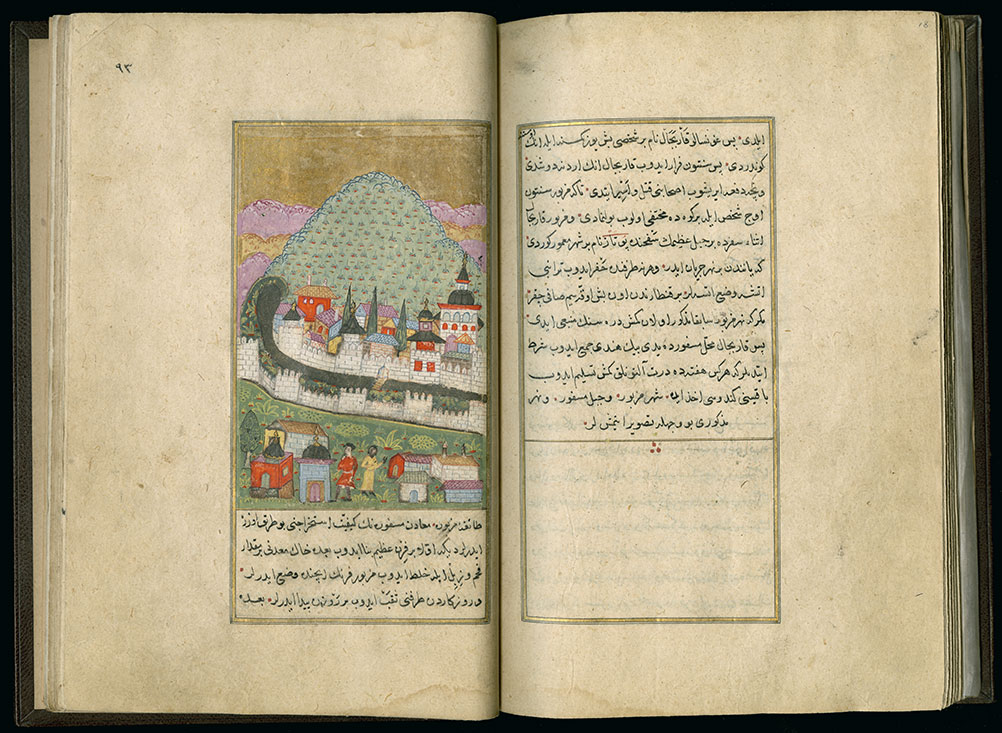La sencilla reproducción de la imagen del Cerro Rico y la Villa Imperial de Cieza de León generó numerosas imitaciones, algunas de ellas muy cercanas al original y otras exageradas o distorsionadas con muchos añadidos. Quizás la más asombrosa imagen del Cerro Rico de Potosí sea la de un manuscrito otomano conocido como el Tarih-i Hindi-i Garbi, un compendio de descripciones e historias de “las Indias” producida en Estambul a finales del siglo XVI.
Potosi en el Tarih-i Hindi-i Garbi
Kris Lane
Lectura adicional
- Arzáns de Orsúa y Vela, B. (1965) Historia de la Villa Imperial de Potosí, 3 vols., edited by L. Hanke and G. Mendoza (Providence, RI: Brown University Press).
- Bakewell, P.J. (1985) Miners of the Red Mountain: Indian Labor in Potosí, 1545–1650 (Albuquerque, NM: University of New Mexico Press).
- Bakewell, P.J. (1987) Silver and Entrepreneurship in Seventeenth-Century Potosí: The Life and Times of Antonio López de Quiroga (Albuquerque, NM: University of New Mexico Press).
- Barragán Romano, R. (2019) Potosí global: viajando con sus primeras imágenes (1550–1650) (La Paz: Plural Editores).
- Bueuchler, R.M. (1981) The Mining Society of Potosí, 1776–1810 (Syracuse, NY: Syracuse University Press).
- Capoche, L. (1959) Relación general de la Villa Imperial de Potosí [1585]. BAE 122. Edited Hanke (Madrid: Atlas).
- Cole, J. (1985) The Potosí Mita, 1573–1700: Compulsory Indian Labor in the Andes (Stanford, CA: Stanford University Press).
- González Casasnovas, I. (2000) Las dudas de la corona: la política de repartimientos para la minería de Potosí (1680–1732) (Madrid: CSIC).
- Lane, K. (2019) Potosí: The Silver City That Changed the World (Oakland, CA: University of California Press).
- Mangan, J. (2005) Trading Roles: Gender, Ethnicity, and the Urban Economy in Colonial Potosí (Durham, NC: Duke University Press).
- Tandeter, E. (1993) Coercion and Market: Silver Mining in Colonial Potosí, 1692–1826 (Albuquerque, NM: University of New Mexico Press).





